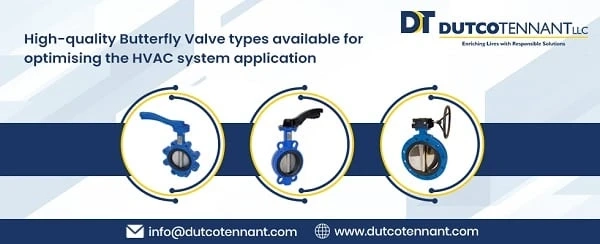Butterfly valves might not be the most glamorous component in a fluid system, but they play a vital role in regulating flow and maintaining the efficiency of many industrial processes. These quarter-turn valves have a simple yet effective design that makes them easy to operate and maintain, making them a popular choice for a wide range of applications.
Now, there are different butterfly valve types, each having their distinct design and mechanism. By understanding the varied types of butterfly valves available, you can choose the best valve for your needs and ensure optimal performance and efficiency in your fluid system.
In this post, we\'ll take a closer look at some of the most common types of butterfly valves. So, keep reading till the end if you want to know more.
Wafer Type Butterfly Valves
Wafer butterfly valves are designed to fit between two flanges and are held in place by bolts. They are usually thinner and lighter than other types of butterfly valves, making them ideal for use in applications where space and weight are a concern. These valves are also relatively easy to install and remove, making them a popular choice for applications that require frequent maintenance.
Wafer butterfly valves have a simple design that consists of a circular disc, a stem, and a body. The disc is located in the centre of the valve body and is connected to a stem that extends outside the valve body. The stem is connected to an actuator, which rotates the disc to control the flow of fluid.
One of the main advantages of wafer butterfly valves is their compact size and weight. They are often used in applications where space is limited or weight restrictions are in place, such as in the aerospace or automotive industries.
Lug Type Butterfly Valves
Lug butterfly valves are similar to wafer butterfly valves in design but have lugs or threaded inserts on the valve body. These lugs allow the valve to be bolted onto the pipeline, providing added stability and support. Unlike wafer butterfly valves, lug butterfly valves can be installed without needing to dismantle the entire pipeline.
The construction of lug butterfly valves is also similar to wafer butterfly valves. The disc is located in the centre of the valve body and is connected to a stem that extends outside the valve body. The stem is connected to an actuator, which rotates the disc to control the flow of fluid.
A prime upside of lug butterfly valves is their capacity to deliver extra stability and support due to the lugs on the valve body. This makes them suitable for applications that require higher pressures or more rigorous conditions than wafer butterfly valves can handle.
If you are looking for different material then these valves are also available in HVAC Lug Type Butterfly Valves and more as well. All you need is select a high-profile distributor such as Dutco Tennant LLC to get plenty of material options.
Flanged Type Butterfly Valves
Flanged type butterfly valves have flanges on either end of the valve body that allow them to be bolted onto the pipeline. The flanges offer much more support and stability making them suitable for high-pressure applications.
These valves also have a similar construction to wafer and lug butterfly valves where the disc resides in the centre of the valve body and is joined to a stem that extends outside the valve body. The stem is connected to an actuator, which rotates the disc to control the flow of fluid.
One of the main advantages of flanged butterfly valves is the additional strength due to the flanges on the valve body. This makes them suitable for even extreme high-pressure applications where wafer and lug butterfly valves may fall short to handle the pressure.
Resilient-seated Butterfly Valves
Resilient-seated butterfly valves are a type of butterfly valve that use a soft material, such as rubber or elastomer, for the valve seat. This soft material provides a resilient, flexible seal that can conform to irregularities in the pipe or valve body, providing a tight seal that prevents leakage.
The construction of resilient-seated butterfly valves is similar to other types of butterfly valves and consists of a circular disc, stem, and body. When the valve is fully open, the disc is positioned parallel to the flow of fluid, allowing it to pass through with minimal resistance. When the valve is closed, the disc is rotated perpendicular to the flow of fluid, creating a tight seal that prevents fluid from passing through.
One of the main advantages of resilient-seated butterfly valves is their ability to provide a tight seal even in applications with low pressure and low temperature.
Applications of Butterfly Valves
Butterfly valves are quite flexible when it comes to their applications. The different types of butterfly valves help in being fitted to specific types of application. For example, if you are searching for plumbing butterfly valves then both wafer and lug type butterfly valves can be chosen.
Resilient-seated valves are suitable for HVAC, water treatment, chemical processing and more industry applications. If you want to discover a wide range of butterfly valve types then make sure to get in touch with Dutco Tennant LLC who are the leading distributors of valve solutions for varied industries.



